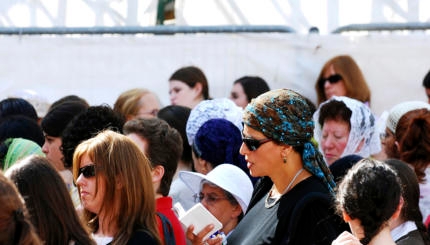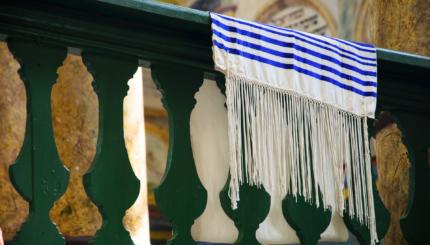Pray
Synagogue Architecture Requirements
Jewish law may make no requirements or restrictions about architectural form, but one prominent 18th century rabbi issued a warning about copying the styles of the rich and famous.
Why Pray? A Variety of Jewish Answers
Jews pray in order to enrich our lives and seek comfort, to connect to the past and to others, to celebrate and develop a sense of the sacred, to serve God and help make ourselves Godlike.
God in Jewish Prayer
The Talmudic rabbis crafted a formula that moves from addressing God to speaking about God. What did they mean to convey through this dual formula?
Synagogues Instead of Cathedrals
Dispersion and uncertainty discouraged Jews from investing in cathedral-like synagogues, but they found a substitute in another dimension.
Pre-Modern Synagogue Architecture and Interior Design
Synagogues share certain functional interior furnishings, but there is no architectural design or artistic style that characterizes a synagogue.
Reinterpreting Tefillin
Some interpretations of the meaning of tefillin have faded, and others have been invented to take their place.
Respect in the Synagogue
Rabbinic restrictions on behavior in the synagogue reveal continuing tension between ordinary Jews' sense of being at home and at ease there, and the desire of rabbis to set it apart as a sacred place.
Rashi and Rabbenu Tam: Two Sets of Tefillin
Evidence from Qumran shows that the medieval debate about the order of biblical passages in tefillin has ancient roots.
Tefillin: Spiritual Significance
The details of this precept, using powerful symbols of allegiance to divine law and of membership in the Jewish religious community, have been subject to many interpretations.
Ashrei: Psalm 145
The internal and external structure of this carefully-crafted Psalm serves to reinforce its theme of praising God as the caring, divine ruler of all creation.



